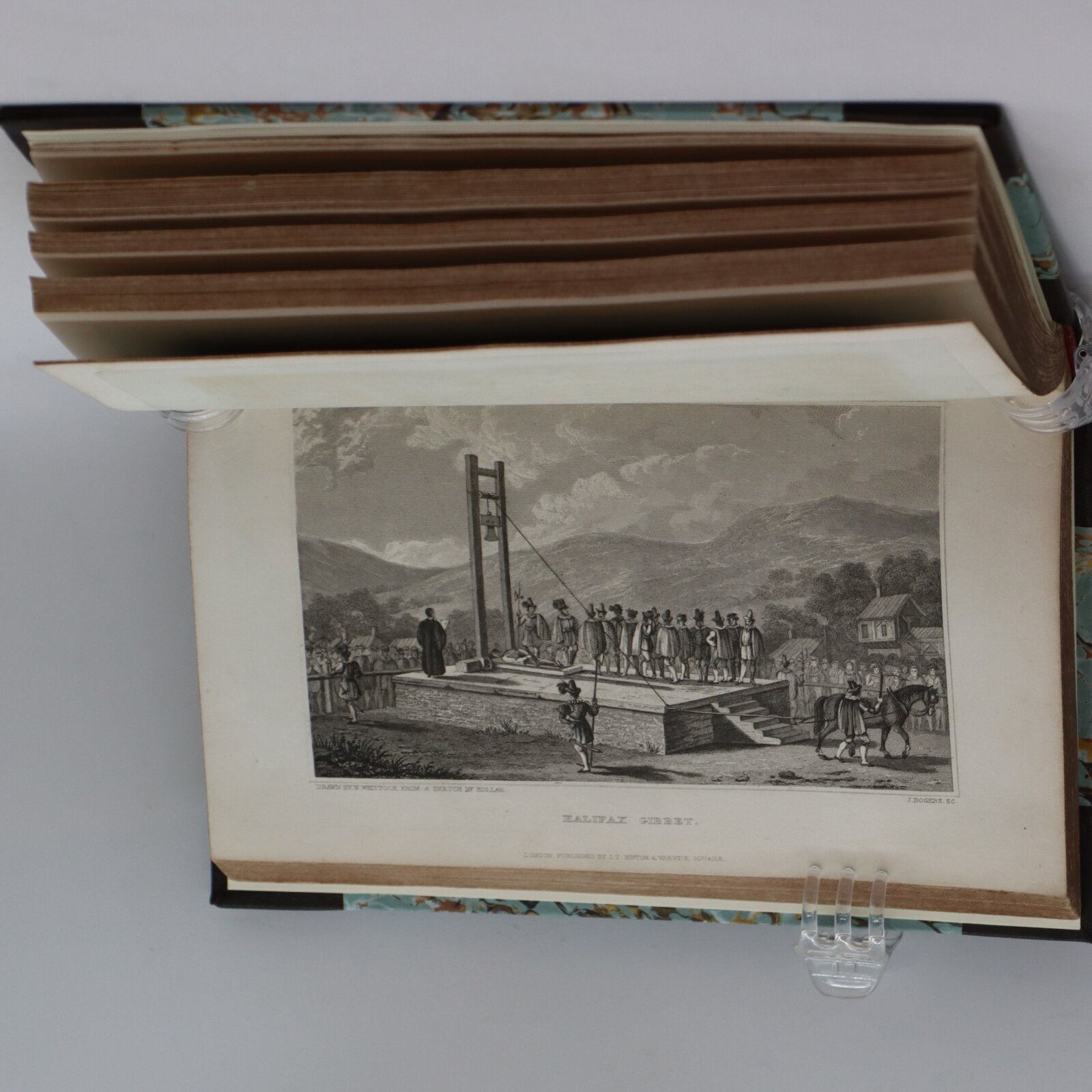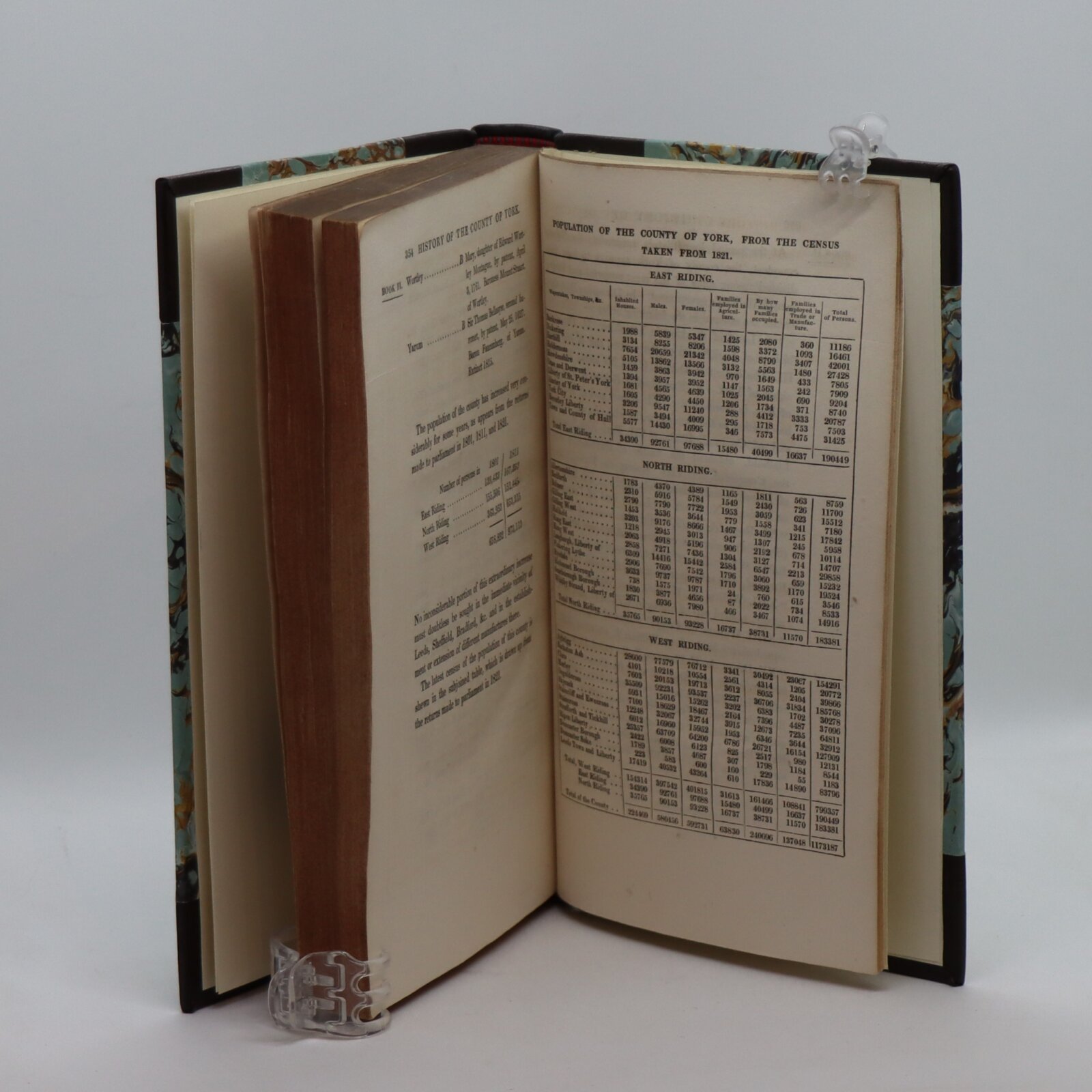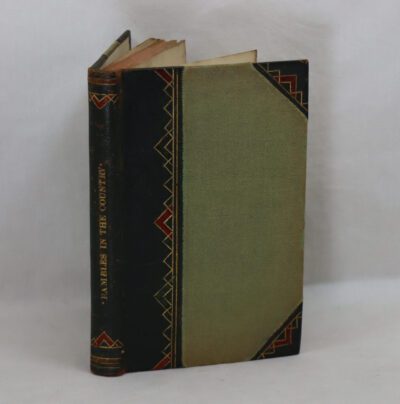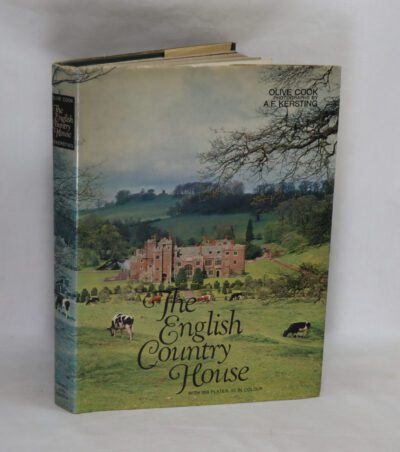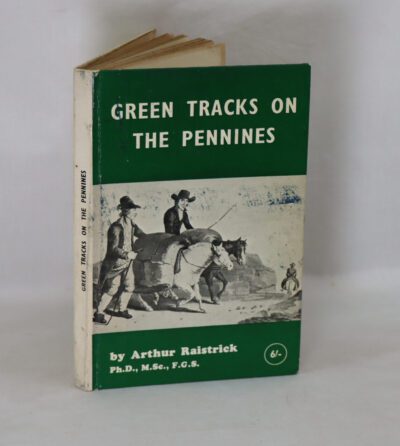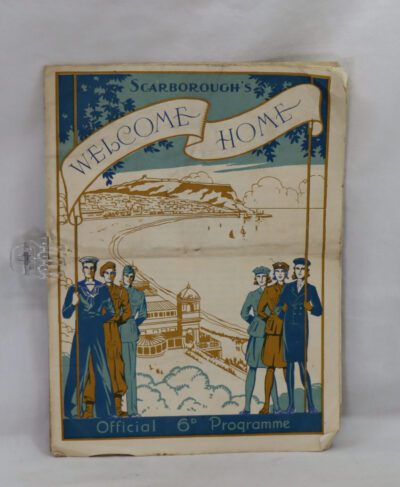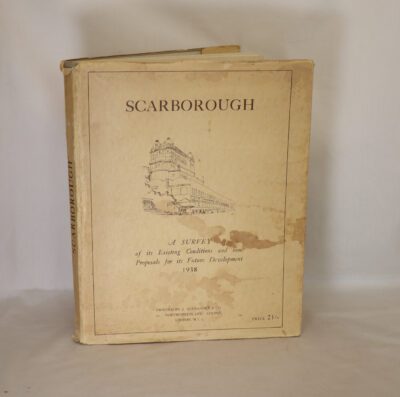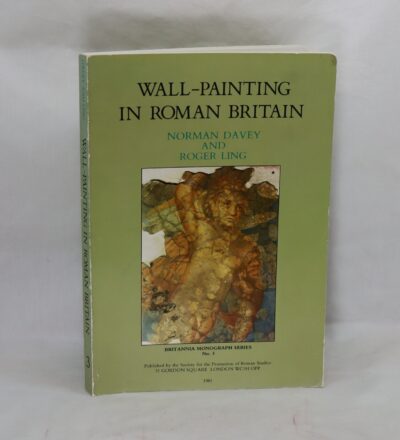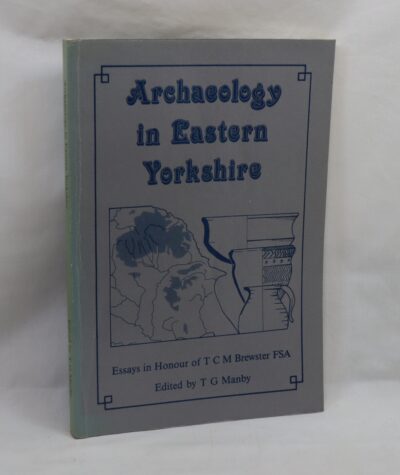County of York. Volumes 1 to 6, & Plates volume.
By Thomas Allen.
Printed: 1828
Publisher: I T Hinton. London
Edition: First edition
| Dimensions | 14 × 22 × 3.5 cm |
|---|---|
| Language |
Language: English
Size (cminches): 14 x 22 x 3.5
Condition: Fine (See explanation of ratings)
FREE shipping
Your items
Item information
Description
Seven volumes. Half brown calf, light blue marbled boards. Purple title plate with gilt lettering.
1st Edition. Six Volumes + Plates – Fantastic
Thomas Allen (1803–1833) was an English topographer. Allen was the son of a map engraver. He died of cholera on 7 July 1833.
The history and antiquities of London, Westminster, Southwark, and parts adjacent (1837)
In 1827 Allen published a quarto volume, The History and Antiquities of the Parish of Lambeth and the Archiepiscopal Palace, with illustrations, mainly drawn and etched by himself. He later published:
- in parts, the History and Antiquities of London, Westminster, and Southwark(1827 and 1828), illustrated by engravings on copper by himself and woodcuts.
- A New and Complete History of the County of York(1828 to 1831), with engravings after Nathaniel Whittock.
- History of the Counties of Surrey and Sussex(1829 to 1830), with engravings after Whittock.
and he began in 1830 a History of the County of Lincoln, with engravings after his own drawings, which was completed after his death and published in 1834.
Allen also published guidebooks to London and the Zoological Gardens, contributed some plates and articles to the Gentleman’s Magazine, and projected A Historical and Topographical Atlas of England and Wales, which he did not live to attempt.
Nathaniel Whittock (26 January 1791 – 12 August 1860) was a Victorian topographical engraver, who published bird’s-eye views, e.g., of York (1828), Oxford (1834), Melbourne, Australia (1854), Hull (1855), and London (1845, 1849, 1859).
He was born to John and Sarah Whittock in the City of Westminster and was baptised on 6 March 1791 at St John’s, Smith Square. Little is known about him until 1824–1829 when he appears as “Teacher of Drawing and Perspective, and Lithographist to the University of Oxford”, and worked for the university’s Ashmolean Museum and scientific community. In 1830 and 1831 he was at 24 Garnault Place, Spa Fields, Islington, London and from 1848 to 1860 he worked at 34 Richard Street, Islington with his cousin Henry Hyde
Whittock was “a prolific writer of instruction books”, on drawing and other subjects, such as The decorative painters’ and glaziers’ guide (1828), On the construction and decoration of the shop fronts of London (1840), and The complete book of trades, or the parents’ guide and youths’ instructor (1837). The full title of the first of these was:
The decorative painters’ and glaziers’ guide: containing the most approved methods of imitating oak, mahogany, maple, rose, cedar, coral, and every other kind of fancy wood, Verd Antique, Dove, Sienna, Porphry, white-veined and other marbles, in oil or distemper colour; designs for decorating apartments, in accordance with the various styles of architecture; with directions for stencilling, and process for destroying damp in walls; also a complete body of information on the art of staining and painting on glass; plans for the erection of apparatus for annealing it, and the method for joining figures together by leading, with examples from ancient windows.
As the full title shows, the work was very comprehensive, and the preface “rails against trade secrecy” which the book was intended to dispel. The work has been described as “influential” and “important” and is often cited by modern scholars of interior decoration.
- Whittock, Nathaniel (1827). The decorative painters’ and glaziers’ guide. London: Isaac Taylor Hinton.
- Whittock, Nathaniel (1828–1833). “Illustrations”. A new and complete history of the county of York. By Allen, Thomas. 1–3. London: I.T. Hinton.
- Whittock, Nathaniel (1829). A Topographical and Historical Description of the University and City of Oxford. London: Isaac Taylor Hinton.
- Whittock, Nathaniel (1829). The art of drawing and colouring from nature : flowers, fruit, and shells. London: Isaac Taylor Hinton.
- Whittock, Nathaniel (1830). “Lithographs”. A description of the Oxford baths, and school of natation. By Richardson, Andrew Hude. Oxford: A.H. Richardson.
- Whittock, Nathaniel (1830). The art of drawing and colouring from nature : birds, beasts, fishes, and insects. London: Isaac Taylor Hinton.
- Whittock, Nathaniel (1830). The microcosm of Oxford. London: J. Bumpus, Hinton and Co.
- Whittock, Nathaniel (1833). The Youth’s New London Self-instructing Drawing Book, in Colours. London: George Virtue.
- Whittock, Nathaniel (1835) [1829]. The Oxford drawing book, or, The art of drawing. London: Edward Lacey.
- Whittock, Nathaniel (1840). On the construction and decoration of the shop fronts of London. London: Sherwood, Gilbert, and Piper.
- Whittock, Nathaniel (1846). The miniature painter’s manual. London: Sherwood, Gilbert, and Piper.
- Whittock, Nathaniel (1846). A picturesque guide through Dublin. Dublin: J. Cornish.
The history of York as a city dates to the beginning of the first millennium AD but archaeological evidence for the presence of people in the region of York dates back much further to between 8000 and 7000 BC. As York was a town in Roman times, its Celtic name is recorded in Roman sources (as Eboracum and Eburacum); after 400, Angles took over the area and adapted the name by folk etymology to Old English Eoforwīc or Eoforīc, which means “wild-boar town” or “rich in wild-boar”. The Vikings, who took over the area later, in turn adapted the name by folk etymology to Norse Jórvík meaning “wild-boar bay”, ‘jór’ being a contraction of the Old Norse word for wild boar, ‘jǫfurr’. The modern Welsh name is Efrog.
After the Anglian settlement of the North of England, Anglian York was first capital of Deira and later Northumbria, and by the early 7th century, York was an important royal centre for the Northumbrian kings. Following the Norman Conquest of 1066 York was substantially damaged, but in time became an important urban centre as the administrative centre of the county of Yorkshire. York prospered during much of the later medieval era; the later years of the 14th and the earlier years of the 15th centuries were characterised by particular prosperity. During the English Civil War, the city was regarded as a Royalist stronghold and was besieged and eventually captured by Parliamentary forces under Lord Fairfax in 1644. After the war, York retained its pre-eminence in the North, and, by 1660, was the third-largest city in England after London and Norwich.
Modern York has 34 Conservation Areas, 2,084 Listed buildings and 22 Scheduled Ancient Monuments in its care. Every year, thousands of tourists come to see the surviving medieval buildings, interspersed with Roman and Viking remains and Georgian architecture.
Condition notes
Want to know more about this item?

Share this Page with a friend




